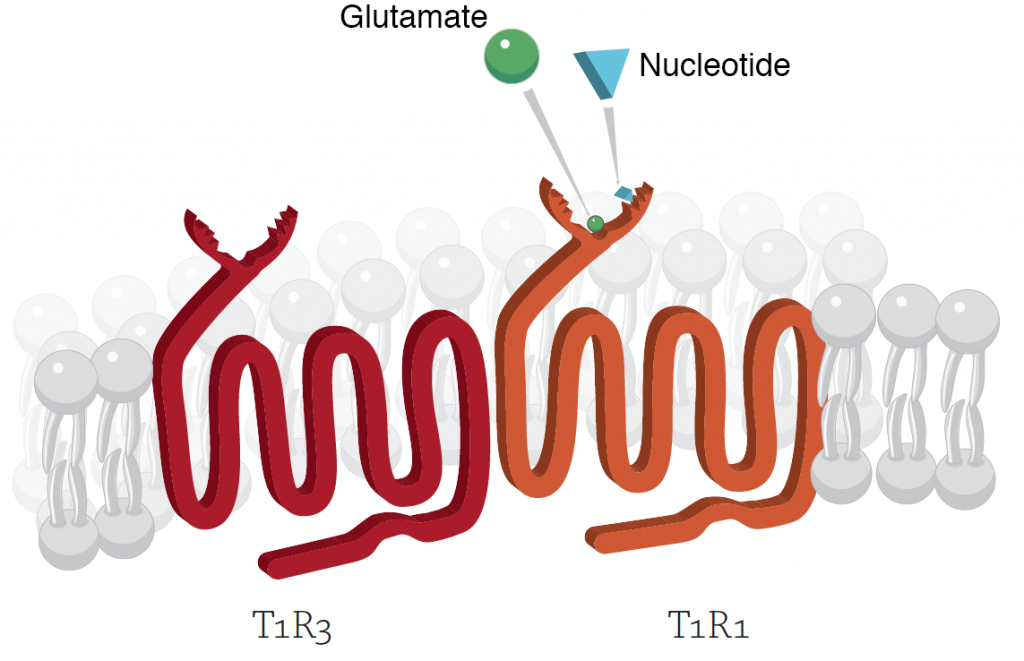By Ole G. Mouritsen (ole.mouritsen@food.ku.dk)
Sensing wine and pairing with food
When describing the sensory perception of wine, also in the context of pairing with food, olfactory sensation (aroma, odour, smell) usually takes priority, and taste and mouthfeel come second. The full concept of flavour formally encompasses smell, taste, and mouthfeel (including astringency and chemesthesis) and some tasters even include visual appearance and auditory sensation. A ‘taste experience’ can thus be defined as a multi-sensoric integration of all these sensory inputs, folded with expectations, previous experiences, culture, social context, etc.: Flavour is in the brain of the taster.
If one adds to this that professional tasters and sommeliers use a non-standardised and often individual vocabulary to characterise the flavour of wine, it is obvious that the situation is complex. Moreover, there is no established scientific theory for food-pairing in general, and many phenomenological systems and empirical principles have been suggested by chefs and sommeliers and described in the culinary literature. Most often professionals use pairing principles based on perceptual, conceptual, and affective categories when matching food with beverages. Overall, preferred matches appear to be based on norms, conceptual association, and social context – and not science.
Umami is special and there is science behind
Focussing on taste proper, i.e., the sensation elicited by small molecules dissolved in the saliva interacting with the taste receptors located in the taste buds on the tongue, the consensus is that we have five basic tastes (sweet, salty, bitter, sour, and umami) of which all other tastes are composed. Umami is special since it is both a basic taste and can acts to enhance other tastes like sweet and salty in addition to suppressing bitterness. Only very little is written about umami in the context of wine tasting and in many cases the use of the term umami is incorrect or misleading, typically used to describe some kind of deliciousness and harmony.
Umami is also special since it is controlled by a unique synergistic principle by which two types of umami taste molecules in combination can enhance the sensation of umami manifold. The principle is based on a now well-understood molecular mechanism on the level of a molecular receptor that resides in our tastebuds. Hence there is science behind.
The two types of molecules are, respectively, the salt glutamate of a free amino acid (glutamic acid) and one of several different so-called free nucleotides. Glutamate can be produced by fermentation of proteins, e.g., by yeast, and free nucleotides are often present in foodstuff like meat, fish, shellfish, and molluscs (e.g., oysters, mussels, and squid).

Graphics by Jonas Drotner Mouritsen.
This synergy principle has been proposed to be the scientific mechanism behind certain good food-food and food-beverage pairings. If you think this sounds strange, you may know it from the deliciousness of pairings like egg-bacon, tomato sauce-meat, and cheese-ham.
Since the principle is based on a receptor mechanism it is universal among all individuals and hence not subject to individual taste preferences. Of course, whether this principle dominates a taste experience will depend on other flavour components of the foods and drinks in consideration.
Umami in fermented beverages
Since free glutamate is a requirement for basal umami one would expect that fermented foodstuff and beverages would be good umami candidates. This is indeed true of such items like soy sauce, aged hard cheeses, fish sauce, and miso. Nucleotides is abundant in muscles and hence meat, fish, and shellfish are good sources, but also certain fungi like shiitake mushrooms.
In the figure below is shown the concentration of free glutamate measured in a range of fermented beverages. It is seen that champagne, in particular the old and aged champagnes, as well as sake are very high in free glutamate. These higher concentrations compared to wines and beer are probably caused by the fact that both sake and champagne are being produced by double fermentation processes. Long contact with the yeast cells and the lees (and the use of the koji mold in sake production) leads to more glutamate due to autolysis of dead yeast cells.

Graphics by Charlotte Vinther Schmidt.
Pairing of champagne with oysters
Champagne with oysters is an iconic pairing. Chefs and sommeliers often rationalize the way they match the two by contrast and affinity, matching oyster properties like meatiness, salinity, and fattiness with champagne properties like minerality, brininess, and prickling acidity. The concepts of nuttiness, savouriness, and umami have also been evoked, in particular in relating possible umami in beverages like champagne and some sherry wines to long yeast contact.
We have hypothesized that champagne and oysters are good companions in terms of taste because of their pairing may facilitate umami synergy, and we have substantiated our hypothesis by concrete and quantitative measurements of compounds that are known to elicit umami taste and engage in umami synergy, including considerations regarding taste threshold of glutamate. It is obvious, however, that there are other factors beyond umami synergy which can influence the judgement of good pairing of champagnes with oysters. Properties of the champagne like minerality, brininess, and prickling acidity have been pointed out to play a role, particularly how these properties couple to mouthfeel.
We have also considered the different requirements to the champagne for entering an effective umami synergy and how it depends on the choice of oysters. Pairing champagne with oysters containing a higher amount of umami compounds will induce umami synergy with champagnes being lower in glutamate (i.e., rested for a shorter time on the lees). This was specifically illustrated by the difference between the two species of oysters, the old European oyster(Ostrea edulis) and the Pacific oyster (Crassostrea gigas), where it was found that Ostrea edulis contains 50% more free nucleotide (inosinate) and 60% more free glutamate than Crassostrea gigas. This difference may be why some tasters prefer the European oyster over the Pacific oyster. Nonetheless, the numbers indicate that champagne in terms of umami taste has more to gain from this pairing compared to the oysters. The optimal effect of the umami synergy would be obtained by eating the oyster first and then after swallowing taking a sip of champagne.
Looking for the optimal type of fermented beverage to match with oysters in terms of umami, the figure above suggests that sake may be a more suitable companion.
Fermented beverages and the green transition
The importance of umami in fermented beverages goes way beyond sophisticated matchings like those discussed above. To promote a green and sustainable transition in the global food systems we must take into account that green foods like vegetables generally lack umami. Consuming fermented beverages with high umami potential together with green food may be a solution to change the eating behaviour in a more sustainable direction.

Ole G. Mouritsen PhD DSc is a physicist and professor of gastrophysics and culinary food innovation at the University of Copenhagen. He is an elected fellow of the Danish Academy of Sciences and Letters, the Danish Gastronomical Academy, and Sigma Xi. He is president of the Danish Gastronomical Academy and director of the Danish national center for taste Taste for Life. He is the author of several scientific books and about 400 scientific papers and reports, in addition to being recipient of a number of prestigious science and science communication prizes. He is appointed Japanese Cuisine Goodwill Ambassador. In his spare time, he cooks, collaborates with chefs, furthers his knowledge of all aspects of food, and writes articles and books about the science of food and taste, including English editions Sushi: Food for The Eye, the Body, and the Soul (2009), Seaweeds: Edible, Available & Sustainable (2014), Umami: Unlocking the Secrets of the Fifth Taste (2014), Life-As a Matter of Fat (2015), Mouthfeel: How Texture Makes Taste (2017), Octopuses, Squid and Cuttlefish. Seafood for Today and Tomorrow (2021), and The Science and Art of Pickled Vegetables: Tsukemono (2021).
References
- Umami. Unlocking the Secrets of the Fifth Taste (O. G. Mouritsen and K. Styrbæk) Columbia University Press, New York (2014). 272pp.
- Umami synergy as the scientific principle behind taste-pairing champagne and oysters (C. V. Schmidt, K. Olsen, and O. G. Mouritsen) Nature Scientific Reports 10, 20077 (2020).
- Umami potential of fermented beverages: sake, wine, champagne, and beer (C. V. Schmidt, K. Olsen, and O. G. Mouritsen) Food Chemistry 360, 128971 (2021).
- Design and ‘umamification’ of vegetables for sustainable eating (O. G. Mouritsen and K. Styrbæk) International Journal of Food Design 5, 9-42 (2020).

